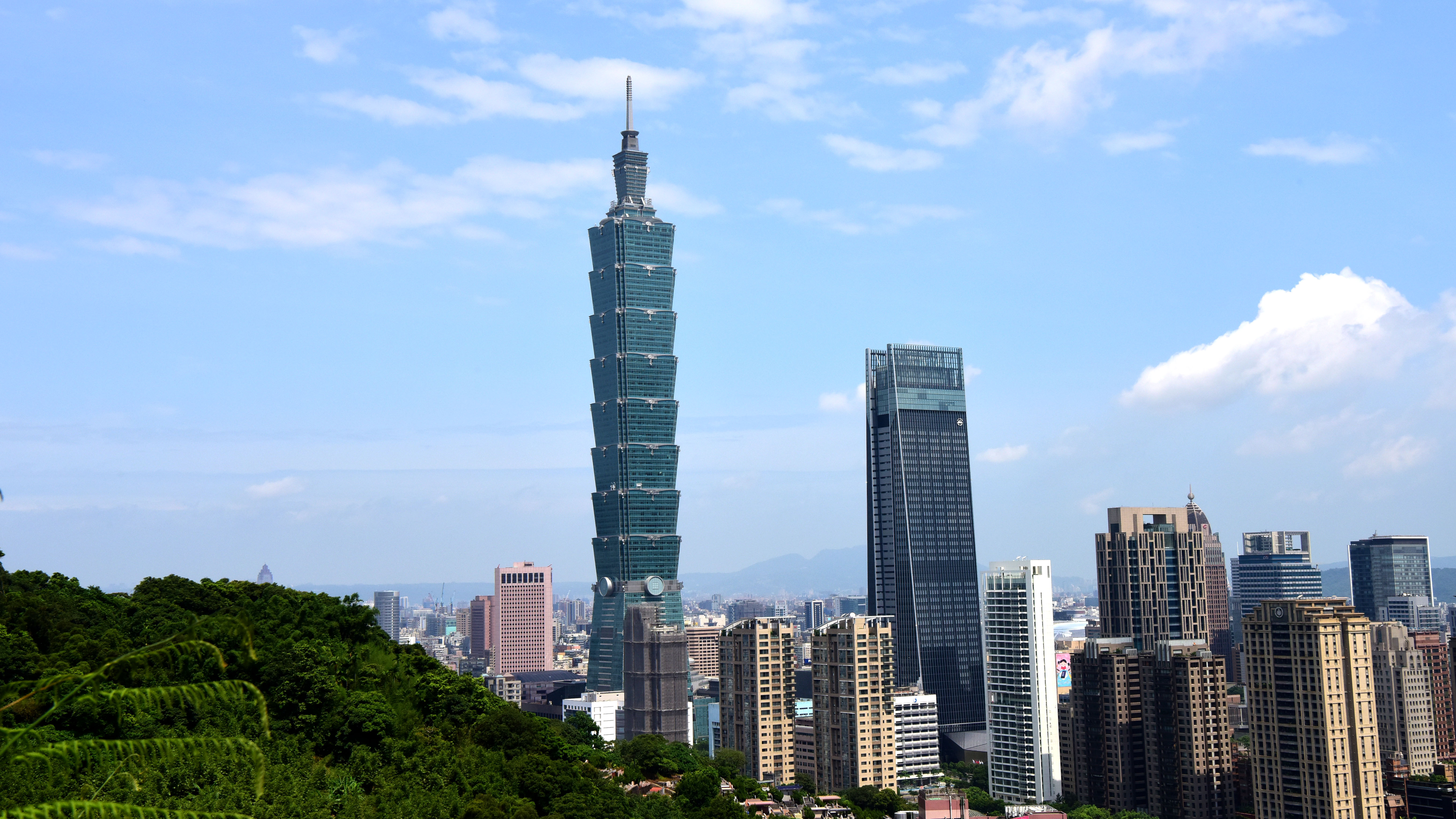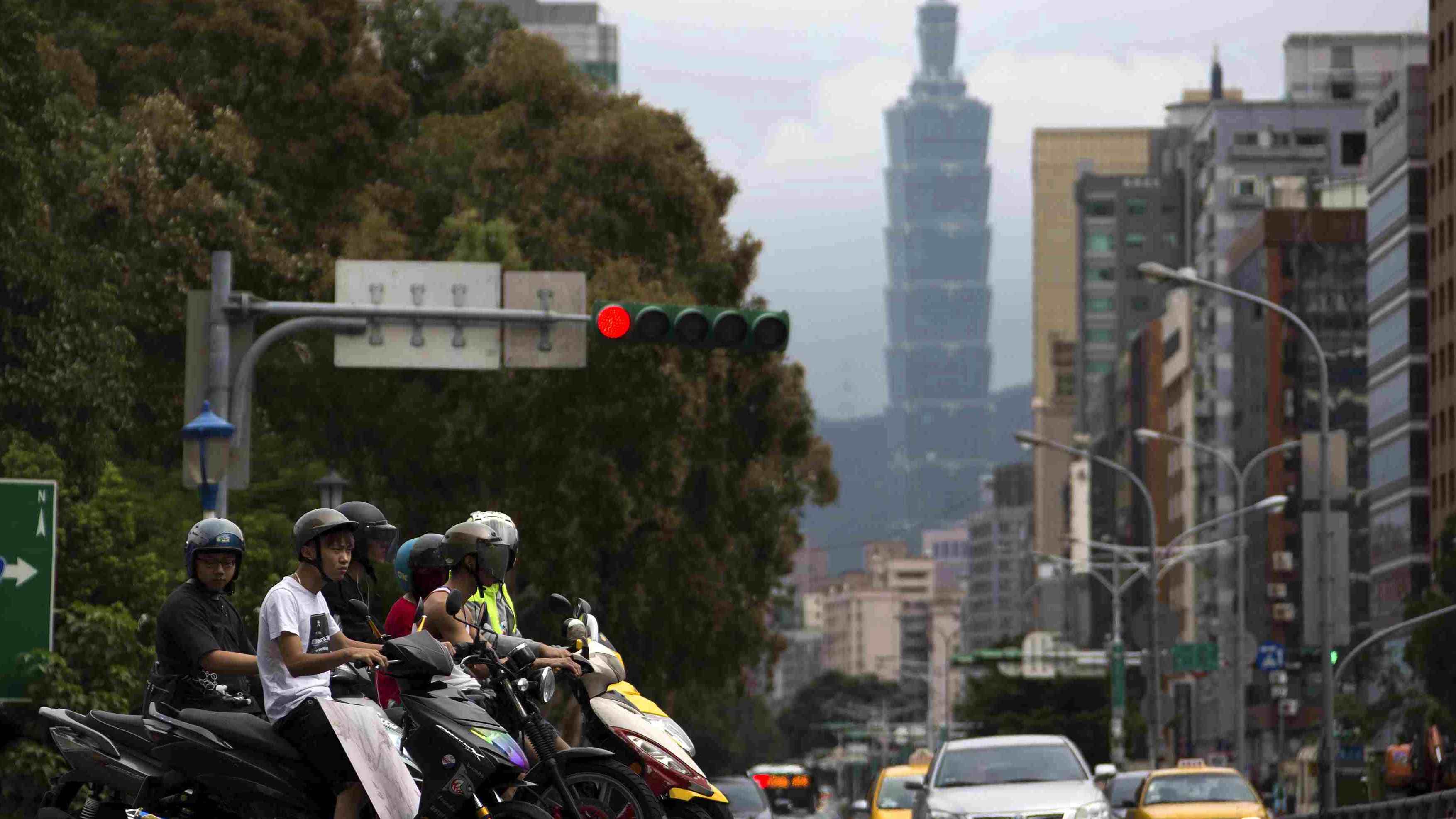
A view of the Taipei 101 skyscraper from Xiangshan Mountain in Taipei, southeast China's Taiwan. /Xinhua
A view of the Taipei 101 skyscraper from Xiangshan Mountain in Taipei, southeast China's Taiwan. /Xinhua
Editor's note: Xin Ge is an associate professor at the School of Public Economics and Administration, Shanghai University of Finance and Economics. The article reflects the author's opinions and not necessarily the views of CGTN.
The Taiwan Affairs Office and the Information Office of the State Council of China jointly published a new white paper entitled "The Taiwan Question and China's Reunification in the New Era" on August 10.
This is the third white paper released by the Chinese government to deal with the question of Taiwan.
It is divided into five sections that highlight a historical review of the CPC's efforts to realize complete national reunification and resolutions and plans for reunification in the new era.
To begin with, the white paper stresses that there is a myriad of evidence that Taiwan has belonged to China since ancient times. From the earliest record in the Seaboard Geographic Gazetteer compiled in the year 230 during the Three Kingdoms Period to the set-up of administrative bodies to exercise jurisdiction over Penghu and Taiwan in the Song and Yuan dynasties, from General Zheng Chenggong's expulsion of Dutch colonialists from the Taiwan island in 1662 to the Chinese resumption of the exercise of sovereignty over Taiwan from Japanese invaders in 1945, all historical records and a host of documents with international legal effect prove that Taiwan is part of China.
The civil war in China in the late 1940s and the interference of external forces engendered the two sides of the Taiwan Strait to fall into a state of protracted political confrontation; however, the sovereignty and territory of China have never been divided and the status that "Taiwan is part of China" has never been altered.
After the founding of the People's Republic of China (PRC) in 1949, generations of Chinese communists have been committed to the historic mission of resolving the Taiwan question and realizing China's complete reunification.
Under the leadership of Mao Zedong, the CPC prepared and worked for the liberation of Taiwan, frustrated the Taiwan authorities' schemes to attack the mainland and thwarted their attempts to establish "two Chinas" or "one China, one Taiwan."
UN General Assembly Resolution 2758 in 1971 recognized the PRC as "the only legitimate representative of China to the United Nations," and the following World Health Assembly Resolution 25.1 in 1972 clearly stated that "the United Nations considers Taiwan as a province of China with no separate status."
The China-U.S. Joint Communique on the Establishment of Diplomatic Relations also states that "The Government of the United States of America acknowledges the Chinese position that there is but one China and Taiwan is part of China." To date, 181 countries have established diplomatic relations with the PRC on the basis of the one-China principle.
Led by Deng Xiaoping, the CPC introduced the innovative and well-conceived concept of "One Country, Two Systems," eased military confrontation across the Taiwan Strait and opened up people-to-people exchanges and cooperation.
During the Jiang Zemin period, the CPC facilitated the agreement of both sides on the 1992 Consensus, clearly embodying the one-China principle, and initiated cross-Strait consultations and negotiations in various fields. The CPC struck hard at the separatist forces seeking "Taiwan independence" and applied the policy of "One Country, Two Systems" to the return of Hong Kong and Macao to China.

Street scene in Taipei, southeast China's Taiwan. /CFP
Street scene in Taipei, southeast China's Taiwan. /CFP
Furthermore, the CPC under the leadership of Hu Jintao enacted the Anti-Secession Law to impede separatist activities in Taiwan, built overall direct two-way cross-Strait links in mail, business and transport, and facilitated the signing and implementation of the Economic Cooperation Framework Agreement.
In the new era, under the leadership of Xi Jinping, the CPC developed its overall policy for addressing the Taiwan issue and made tremendous efforts to keep cross-Strait relations on the right track. It set out not only the overarching guidelines but also a series of concrete measures, which brought tangible benefits to people across the Strait, especially Taiwan residents.
Trade volume rose more than 7,000 fold from $46 million in 1978 to $328.34 billion in 2021. The mainland has been Taiwan's largest export market and largest destination for off-island investment. The number of visits also soared from less than 50,000 in 1987 to about 9 million in 2019.
China's overall development, especially the grand achievements over the past four decades of reform, opening up and modernization, has made far-reaching impacts on the historical process of resolving the Taiwan question.
While cross-Strait relations have been on the track of steady and deep development, the Democratic Progressive Party (DPP) authorities in Taiwan have adopted a separatist stance and colluded with external forces in successive provocative actions to divide the country. They refuse to recognize the one-China principle, deny the 1992 Consensus, incite radical separatists in Taiwan to lobby for amendments to their "laws" and "constitution," agitate hostility against the mainland, and escalate cross-Strait tension and confrontation. All this not merely undermines cross-Strait exchanges, cooperation and integrated development, but also peace and stability in the Asia-Pacific region.
The authorities have also decisively built up a military force with the aid of some anti-China forces in the United States, further attenuating the prospects and restricting the space for peaceful reunification.
In light of recent provocations made by some politicians in China's Taiwan region and the United States, the CPC reiterates its firm upholding of the basic principles of peaceful reunification and "One Country, Two Systems." This approach, grounded in democratic principles, remains the most inclusive peaceful solution to the Taiwan question. The Party has promised that in designing the specifics for implementing "One Country, Two Systems," full consideration would be given to the realities in Taiwan and the opinions and proposals from all walks of life on both sides, and the interests and sentiments of our compatriots in Taiwan will be fully accommodated.
But the white paper emphasizes that while the mainland is ready to create ample space for peaceful reunification, no room will be left for separatist activities in any form.
The last section of the white paper envisions bright prospects after peaceful reunification, including that Taiwan will have a vast space for development, the rights and interests of the people in Taiwan will be fully protected, and that both sides of the Taiwan Strait will share the triumph of national rejuvenation, which is conducive to peace and development in the Asia-Pacific region as well as the world.
As the white paper summarizes, "The future of Taiwan lies in China's reunification, and the wellbeing of the people in Taiwan hinges on the rejuvenation of the Chinese nation." The peaceful reunification under "One Country, Two Systems" will lay new foundations for the country to make further progress and achieve national rejuvenation. Undoubtedly, a united and prosperous China will be a blessing for all Chinese.
(If you want to contribute and have specific expertise, please contact us at opinions@cgtn.com. Follow @thouse_opinions on Twitter to discover the latest commentaries in the CGTN Opinion Section.)

